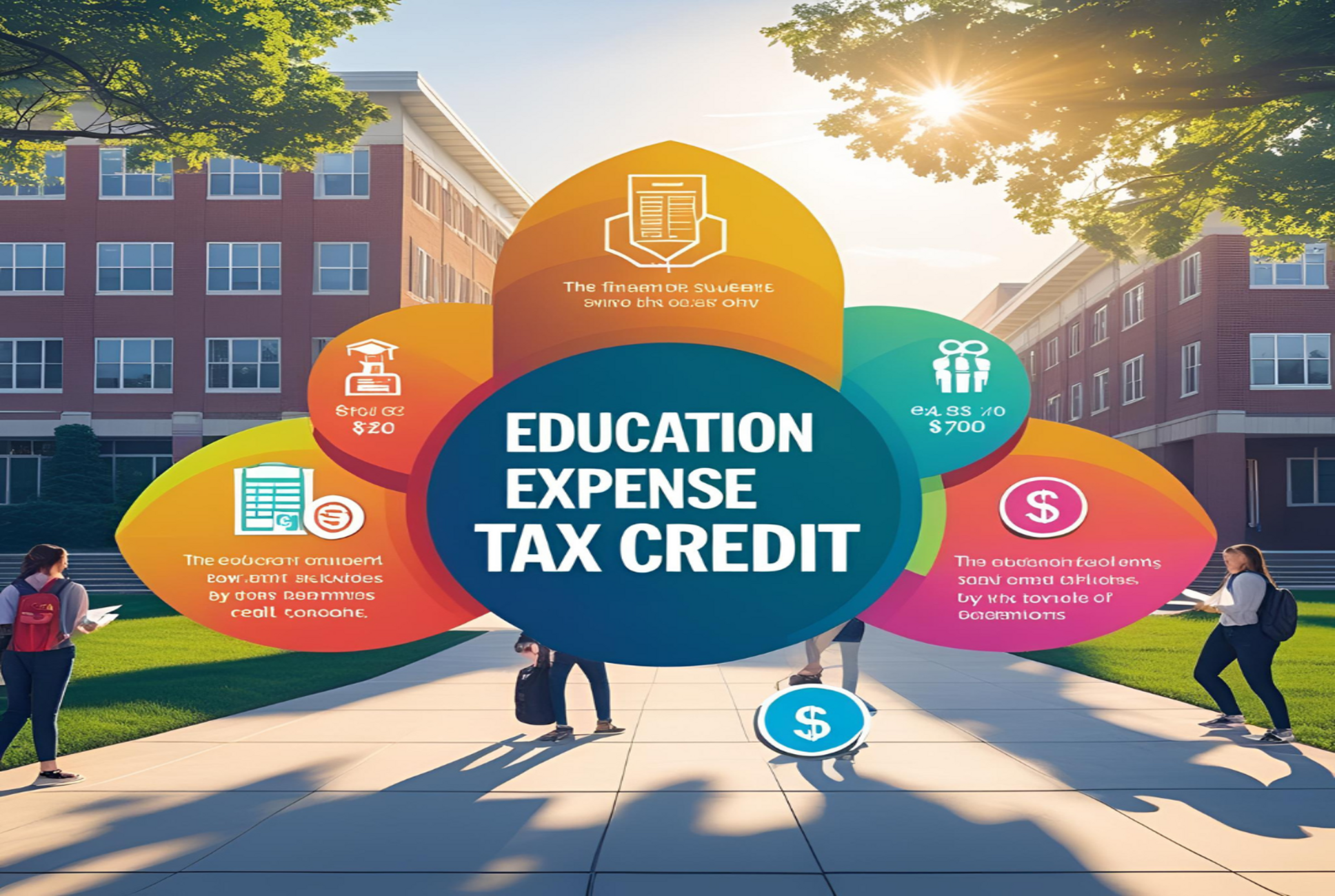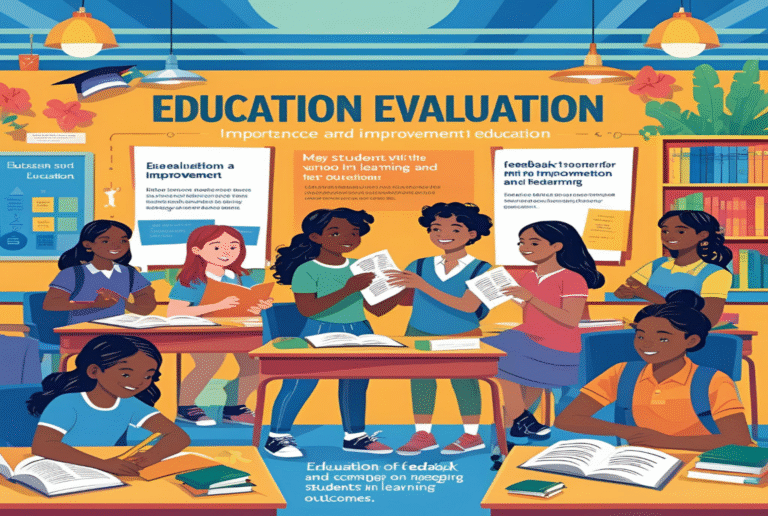Education Expense Tax Credit
Maximizing Knowledge, Minimizing Costs: Understanding the Education Expense Tax Credit
Introduction
Education Expense Tax Credit The rising cost of education is an undeniable burden on families and individuals striving for academic advancement and career success. From tuition fees and textbooks to online courses and professional certifications, the financial demands of education are increasingly steep. Amid this challenge, one financial tool stands out as both empowering and underutilized: the education expense tax credit.
Designed to lighten the financial load of learners and their supporters, education tax credits offer a tangible incentive for investing in knowledge. But these credits are more than just tax breaks—they are policy instruments that support lifelong learning, economic mobility, and social progress. This article explores the intricacies, impact, and real-world application of education expense tax credits, offering insights into how they can be leveraged by students, parents, and adult learners alike.
The Evolution of Education Tax Benefits
The concept of using tax policy to promote education isn’t new. Governments have long recognized the value of an educated populace and have implemented various tax-based incentives to encourage schooling. In the United States, two of the most well-known federal education tax credits are the American Opportunity Tax Credit (AOTC) and the Lifetime Learning Credit (LLC).
Other countries, including Canada, the UK, Australia, and several EU nations, also offer tax relief on education expenses, though the structure, eligibility, and benefits vary significantly. These policies have evolved to reflect shifts in labor market demands, the rise of digital learning, and the changing nature of post-secondary education.
Understanding the American Opportunity Tax Credit (AOTC)
The AOTC is arguably the most generous education tax benefit available to U.S. taxpayers. Designed to assist students in their first four years of post-secondary education, this credit offers:
- A maximum of $2,500 per eligible student per year
- 100% of the first $2,000 spent on qualified education expenses
- 25% of the next $2,000 spent
- Refundability of up to 40% ($1,000) if the credit exceeds the amount of taxes owed
Qualified expenses include tuition, required enrollment fees, and course materials (such as books and supplies). To qualify, the student must be pursuing a degree or other recognized credential, be enrolled at least half-time, and not have completed the first four years of postsecondary education before the tax year.
Income limits apply: For the 2024 tax year, the credit phases out for individuals with modified adjusted gross incomes (MAGI) between $80,000 and $90,000 ($160,000–$180,000 for married couples filing jointly).
The Lifetime Learning Credit (LLC)
The LLC is designed with flexibility in mind. It supports a broader range of educational pursuits, including graduate study, part-time study, professional development, and even courses to acquire or improve job skills. Key features include:
- Up to $2,000 per tax return (not per student)
- 20% of the first $10,000 in qualified education expenses
- Non-refundable (i.e., can reduce tax liability to zero but not beyond)
Unlike the AOTC, there’s no limit to the number of years a student can claim the LLC. This makes it ideal for adult learners, career changers, and those pursuing continued professional education.
Income thresholds for the LLC are slightly lower than those of the AOTC. For the 2024 tax year, the credit phases out for individuals with MAGI between $80,000 and $90,000 ($160,000–$180,000 for joint filers).
What Counts as Qualified Education Expenses?
Tax credits apply only to certain types of educational spending. For both the AOTC and LLC, “qualified expenses” typically include:
- Tuition and fees required for enrollment
- Books, supplies, and equipment required for coursework (AOTC only)
- Fees for course-related expenses
However, costs such as room and board, transportation, insurance, and extracurricular activities are generally not covered.
For the self-employed or those taking education to improve business skills, additional deductions and credits may apply under separate rules.
Claiming the Credit: Process and Paperwork
To claim education tax credits, taxpayers must:
- Receive Form 1098-T from an eligible educational institution (in the U.S.).
- File IRS Form 8863, Education Credits, with their federal tax return.
- Provide the student’s taxpayer identification number (TIN).
- Retain receipts and documentation of qualified expenses.
Inaccurate claims can result in penalties or disqualification from future eligibility, so meticulous record-keeping is essential.
Education Tax Credits Around the World
While the U.S. leads in formalizing education credits, other nations offer similar, though differently structured, benefits:
- Canada: Offers tuition tax credits, education amount deductions, and credits for interest paid on student loans.
- UK: No direct education tax credits, but tuition fees are supported by student loan programs with income-based repayment.
- Australia: The HECS-HELP system defers tuition fees, which are repaid through the tax system based on income thresholds.
- Germany and Scandinavia: Education is often free or highly subsidized, so tax credits are less relevant but living expenses may be deductible for students.
These variations reflect broader philosophical and economic approaches to education funding. Countries that offer free or low-cost education tend to emphasize public investment over tax incentives.
The Socioeconomic Impact of Education Tax Credits
Education tax credits help level the playing field, making higher education more accessible to middle- and lower-income families. They encourage educational attainment, which in turn promotes workforce development and innovation.
But critics argue that such credits disproportionately benefit those already able to pay upfront costs. Refundable credits like the AOTC partly address this concern, but structural inequities remain. For instance, families too poor to owe income taxes may not benefit as much from non-refundable credits like the LLC.
Moreover, complicated eligibility rules and paperwork often deter eligible individuals from claiming these credits. According to a study by the Government Accountability Office, millions of students miss out annually due to confusion or lack of awareness.
The Case for Reform
Despite their advantages, education tax credits are ripe for reform. Experts have proposed various improvements, such as:
- Consolidating credits to reduce confusion between AOTC and LLC.
- Expanding refundability to better support low-income families.
- Raising income thresholds to reflect inflation and changing economic realities.
- Allowing partial credits for non-degree and short-term courses, especially relevant in the age of digital and vocational upskilling.
These reforms would not only simplify tax filing but also ensure that tax benefits better align with modern educational and labor needs.
Education Credits for the Future: Digital and Lifelong Learning
The modern economy demands continual learning. Short-term coding bootcamps, online certifications, and vocational courses are increasingly common paths to career advancement. Yet many of these non-traditional learning avenues are excluded from current tax credit eligibility.
As remote learning grows and new educational models proliferate, tax policy must evolve. Policymakers are beginning to consider credits or deductions for digital learning, subscription-based courses, and skill-enhancement programs that may not be tied to accredited institutions but still offer real economic value.
This expansion would support lifelong learning—a necessity in an age where careers are long, jobs evolve rapidly, and industries are disrupted by technology and globalization.
Tax Credits vs. Deductions vs. Savings Accounts
It’s important to distinguish between different forms of tax relief related to education:
- Tax Credits (like AOTC and LLC): Directly reduce the amount of tax owed.
- Tax Deductions (e.g., student loan interest deduction): Reduce taxable income, which can indirectly lower taxes.
- Education Savings Accounts (e.g., 529 Plans): Allow tax-free growth and withdrawals for qualified education expenses.
Each has its strengths. Credits are more immediate and often more generous, while savings accounts provide long-term planning benefits. Strategic use of multiple tools can maximize financial benefits for families.
Case Study: Real-World Impact
Consider Emily, a 19-year-old freshman at a public university. Her tuition and fees total $4,500 per year, and she spends $800 on textbooks. Her family earns $75,000 annually.
- With $5,300 in qualified expenses, Emily is eligible for the full $2,500 AOTC.
- Since her family owes $2,000 in federal taxes, the credit reduces their tax liability to $0 and gives them a $500 refund.
Now take Mike, a 38-year-old professional taking evening courses to switch careers. His expenses for the year total $3,500, but he doesn’t qualify for the AOTC due to prior college completion. However, he can claim $700 under the LLC (20% of $3,500).
These cases illustrate how different credits apply to different learners and can provide meaningful support.
Maximizing Benefits: Tips for Taxpayers
- Understand your eligibility: Know the difference between AOTC and LLC.
- Track all qualified expenses: Books, fees, supplies—keep receipts.
- File early: Ensure you receive Form 1098-T and confirm information.
- Consult a tax professional: Especially if you’re self-employed or unsure about overlapping benefits.
- Use IRS tools: The IRS offers interactive tax assistants and publication guides to help clarify complex rules.
Conclusion
Education Expense Tax Credit is one of the most valuable investments a person can make, and tax credits help reduce the financial barrier to that investment. From first-time college students to adults re-skilling for a new career, education expense tax credits can turn a financial burden into an opportunity.
Yet, for these credits to fulfill their potential, awareness must increase, access must widen, and policies must modernize. In a world where knowledge drives innovation and opportunity, education tax credits are not merely accounting line items—they are tools for empowerment, equity, and economic growth.





